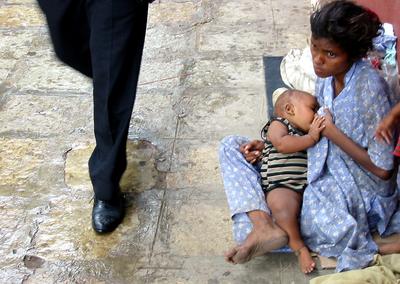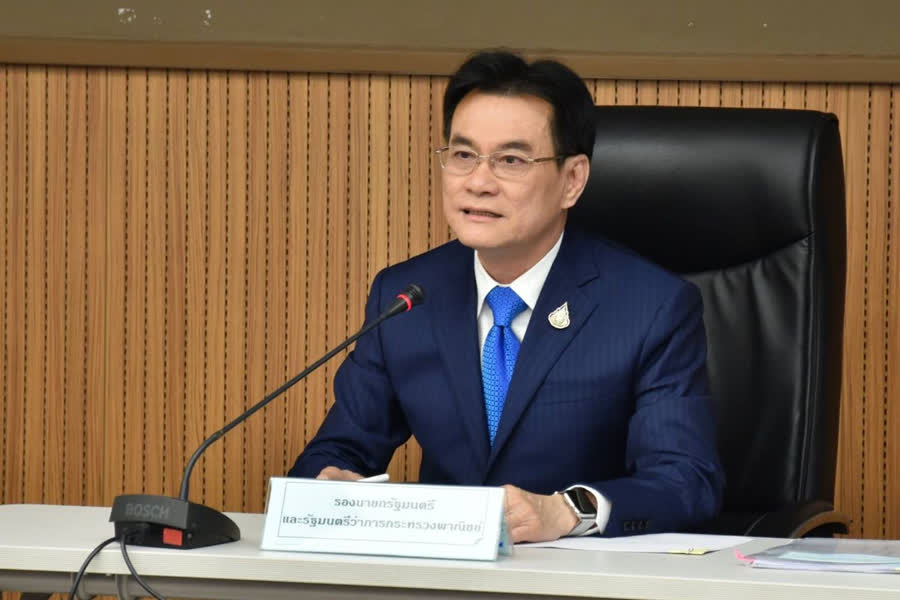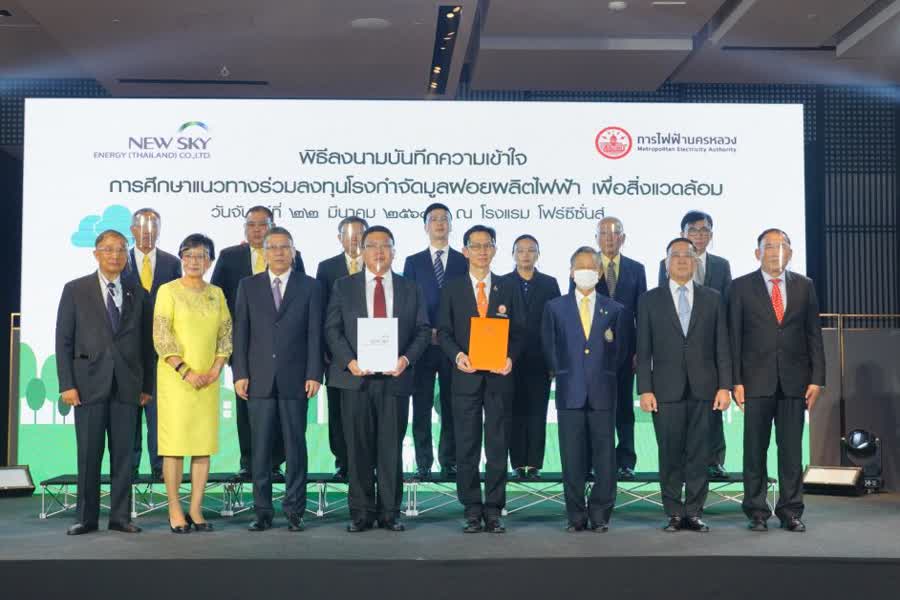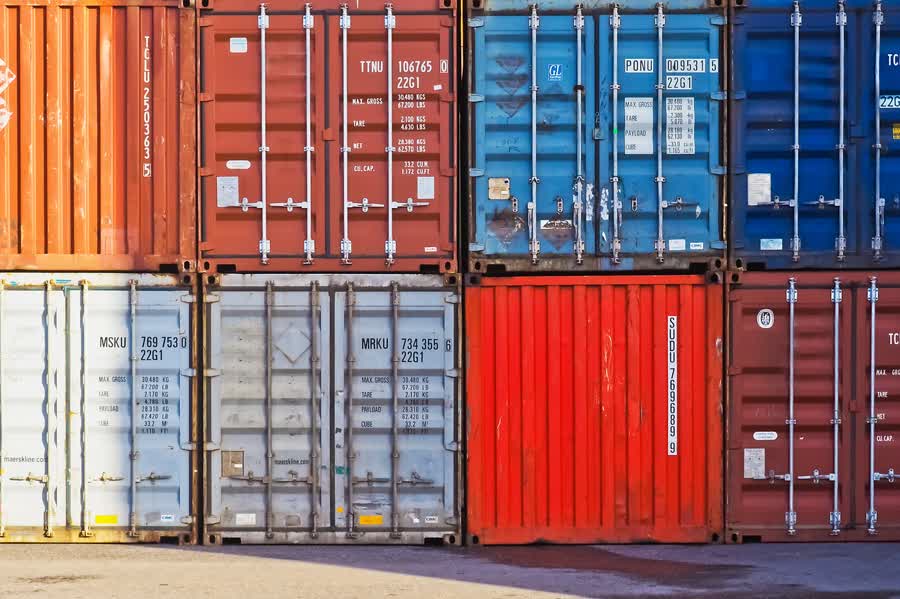Economics
Rising Asia : development challenges, and high stake in global economic recovery
Author: Maria Monica Wihardja, CSIS, Indonesia The Asian Development Bank, along with Indonesian ministries, including the Trade Ministry and the National Development Planning Ministry, this month held a symposium on ‘Asia’s Development Agenda in Regional and International Fora’ and a consultation meeting on ‘Asia 2050.’ These themes are timely; despite its growth miracles, Asia continues to face development challenges, and its stake in the global economic recovery is high. Asia’s success is not pre-ordained, according to Shigeo Katsu, a senior associate of the Centennial Group, at the Asia 2050 meeting. He suggests that the worst possible scenario for Asia by 2050 would see India and China become trapped as middle-income countries with poor institutions and governance, and growing inequality. At the middle level of development, information networks that sustain small economic activities in non-contractual and relation-based societies would no longer be able to support contract enforcements in large economies. Although state institutions are needed, the scale of activity is not yet large enough to justify the cost of establishing them, rendering the formation of contractual and rules-based societies a failure. Moreover, there are political obstacles associated with people who have sunk stakes in the old system, preventing the establishment of a new system. Emil Salim, chairman of Indonesia’s Presidential Board of Advisors, foresees an unbalanced Asia in 2050 between the Asia 8 — India, Indonesia, Japan, Malaysia, China, South Korea, Thailand and Vietnam — and the rest of Asia, as dictated by market-based economies. Growing inequality within the countries — between a highly developed urban-based West Indonesia and an underdeveloped East Indonesia; the rapidly modernised coastal areas of east China and poverty-stricken western-most region of China ; and among Indian States with strikingly diverse poverty rates — is also foreseeable. So, is Asia moving in the wrong direction? Or should Asia look more to an equitable and sustainable trajectory? We also see ‘two faces of Asia’ on elements other than economic growth — the first face consists of Newly Industrialised Economies (including Hong Kong, South Korea, Malaysia, Singapore, Taipei and Thailand) plus China and India, while the second face consists of resource-rich, low-income, and less developed countries as well as the small states of Asia. The ‘Asia’s Development Agenda’ symposium stressed three agendas to bring more equitable development between the two faces of Asia, and within country: AID for Trade, Financial Inclusion, and the Social Safety Net. The critical issues for a rising Asia are institutional issues: social norms and culture — issues that are downplayed by many economists. Kaushik Basu, in his new book, Beyond the Invisible Hand (2010) , argues that social norms and culture are as important as law. This can be easily understood if we accept the fact that human beings are social beings — we react to what others do and most of the things we do are shaped by the cultural and social environment in which we live. ‘Equilibrium differences’ are greater than ‘innate differences.’ This is why Asia’s jewels — China, Indonesia and India — may be trapped in a ‘low equilibrium,’ with poor social attitudes reinforcing people’s behaviour, shackling their rise as market-based countries because of poor institutions, governance and political environments. The threat of a ‘middle-income trap’ is real. One other important issue is the regional and global cooperation required to build a more equitable and sustainable Asia . The foreign policies of China, India and Indonesia have been outward-looking and the stakes are high: India hosted leaders from all five permanent members of the United Nations Security Councils last year; Indonesia will host the first expanded East Asian Summit this year with two new members, Russia and the US, and with a possibility of hosting the G20 Finance Ministerial and Central Bank Governors’ Meeting in 2013; and Chinese President Hu Jintao’s 2011 visit to the U S has set the basis for the coming decades of a bilateral relationship, the stability of which is of global importance. ‘Soft-power’ policies from the region are a priority. Mahendra Siregar, Indonesian deputy Minister of Trade and the Indonesian G20 Sherpa, reminds us that Asia’s outward looking strategies should be geared toward reorienting our focus to how Asia can contribute to the global economic recovery, and not vice versa. Without these elements a ‘rising Asia,’ hidden behind high economic growth figures, will be merely a chimera. Maria Monica Wihardja is a researcher at the Centre for Strategic and International Studies, Indonesia and is a lecturer at the Department of Economics, University of Indonesia. A version of this article was published in The Jakarta Post on 2 February 2010. Obama in Asia Wisdom of an Asia rising Indonesia and the BRICs

The Asian Development Bank, along with Indonesian ministries, including the Trade Ministry and the National Development Planning Ministry, this month held a symposium on ‘Asia’s Development Agenda in Regional and International Fora’ and a consultation meeting on ‘Asia 2050.’ These themes are timely; despite its growth miracles, Asia continues to face development challenges, and its stake in the global economic recovery is high.

Asia’s success is not pre-ordained, according to Shigeo Katsu, a senior associate of the Centennial Group, at the Asia 2050 meeting. He suggests that the worst possible scenario for Asia by 2050 would see India and China become trapped as middle-income countries with poor institutions and governance, and growing inequality. At the middle level of development, information networks that sustain small economic activities in non-contractual and relation-based societies would no longer be able to support contract enforcements in large economies.
Although state institutions are needed, the scale of activity is not yet large enough to justify the cost of establishing them, rendering the formation of contractual and rules-based societies a failure. Moreover, there are political obstacles associated with people who have sunk stakes in the old system, preventing the establishment of a new system.
Emil Salim, chairman of Indonesia’s Presidential Board of Advisors, foresees an unbalanced Asia in 2050 between the Asia 8 — India, Indonesia, Japan, Malaysia, China, South Korea, Thailand and Vietnam — and the rest of Asia, as dictated by market-based economies. Growing inequality within the countries — between a highly developed urban-based West Indonesia and an underdeveloped East Indonesia; the rapidly modernised coastal areas of east China and poverty-stricken western-most region of China; and among Indian States with strikingly diverse poverty rates — is also foreseeable. So, is Asia moving in the wrong direction? Or should Asia look more to an equitable and sustainable trajectory?
We also see ‘two faces of Asia’ on elements other than economic growth — the first face consists of Newly Industrialised Economies (including Hong Kong, South Korea, Malaysia, Singapore, Taipei and Thailand) plus China and India, while the second face consists of resource-rich, low-income, and less developed countries as well as the small states of Asia. The ‘Asia’s Development Agenda’ symposium stressed three agendas to bring more equitable development between the two faces of Asia, and within country: AID for Trade, Financial Inclusion, and the Social Safety Net.
The critical issues for a rising Asia are institutional issues: social norms and culture — issues that are downplayed by many economists. Kaushik Basu, in his new book, Beyond the Invisible Hand (2010), argues that social norms and culture are as important as law. This can be easily understood if we accept the fact that human beings are social beings — we react to what others do and most of the things we do are shaped by the cultural and social environment in which we live. ‘Equilibrium differences’ are greater than ‘innate differences.’ This is why Asia’s jewels — China, Indonesia and India — may be trapped in a ‘low equilibrium,’ with poor social attitudes reinforcing people’s behaviour, shackling their rise as market-based countries because of poor institutions, governance and political environments. The threat of a ‘middle-income trap’ is real.
One other important issue is the regional and global cooperation required to build a more equitable and sustainable Asia. The foreign policies of China, India and Indonesia have been outward-looking and the stakes are high: India hosted leaders from all five permanent members of the United Nations Security Councils last year; Indonesia will host the first expanded East Asian Summit this year with two new members, Russia and the US, and with a possibility of hosting the G20 Finance Ministerial and Central Bank Governors’ Meeting in 2013; and Chinese President Hu Jintao’s 2011 visit to the US has set the basis for the coming decades of a bilateral relationship, the stability of which is of global importance. ‘Soft-power’ policies from the region are a priority. Mahendra Siregar, Indonesian deputy Minister of Trade and the Indonesian G20 Sherpa, reminds us that Asia’s outward looking strategies should be geared toward reorienting our focus to how Asia can contribute to the global economic recovery, and not vice versa.
Without these elements a ‘rising Asia,’ hidden behind high economic growth figures, will be merely a chimera.
Author: Maria Monica Wihardja, CSIS, Indonesia Maria Monica Wihardja is a researcher at the Centre for Strategic and International Studies, Indonesia and is a lecturer at the Department of Economics, University of Indonesia.
Read more:
The chimera of rising Asia
Economics
National News Bureau Of Thailand

BANGKOK (NNT) – The Commerce Ministry has launched measures to increase rice exports to 6 million tons this year, valued at around 150 billion baht, with Indonesia, China, Bangladesh and Iraq set to be the main markets under government-to-government (G2G) deals.
Commerce Minister Jurin Laksanawisit said G2G deals and a campaign to make Thai rice more recognizable around the world will spearhead efforts to increase the export volume from last year’s 5.7 million tons.
He said the ministry is working with the Thai Rice Exporters Association to promote Thai rice under the “Think Rice, Think Thailand” campaign, adding that Thailand successfully made Thai rice become better known in Canada, increasing its exports to the country by 21% to 120,000 tons last year.
Mr Jurin said one of the distinctive characteristics of Thai rice is its very low sugar content. This would make it the preferred choice among Canadians as 28% of the Canadian population has high blood sugar levels.
Economics
Bangkok Metropolitan Energy Authority (MEA) partners with Chineses owned Newsky Energy (Thailand) Company

The MEA has signed a Memorandum of Understanding with private firm Newsky Energy Thailand on co-investment arrangements for waste-to-energy power plants in the Nong Khaem and On Nut districts of Bangkok, a project costing about 10 billion baht.
MEA Governor Kirapat Jiamset, said today that each of the waste-to-energy plants will have a generating capacity of 35 megawatts of electricity using 1,000 tons of waste as fuel each day.
Mr Kirapat said the two power plants will be introduced along with the smart grid system, which allows communities in service areas to receive power entirely from these plants, independent of the main power lines.
New Sky Energy Thailand CEO He Ning said the company has been working with the Bangkok Metropolitan Administration to operate a waste-to-energy incinerator at Nong Khaem dump, which converts 500 tons of garbage into electricity each day.
Operating since 2016, Mr Ning said the incinerator has been continuously feeding electricity to the MEA, with systems in place to take care of the environment and nearby communities.
The proposed new waste-to-energy plants are currently in the public consultation process. The construction of these projects is expected to commence later this year, and come online in the electricity grid in 2024.
According to the Department of Business Development, Newsky Energy (Thailand) Company Limited is currently registered as an electric power generation and transmission company in Thailand. The company is 100% owned by Chinese investors and reported a -7.25% net profit in the fiscal year 2019.
Economics
Thailand sets export growth target at 4% for 2021

BANGKOK (NNT) – Thailand has seen export growth of 0.35 per cent in the first month of the year. The Commerce Minister has ordered the Department of International Trade Promotion to advance an action plan to accelerate growth, which is set at 4 per cent this year.
(more…)











